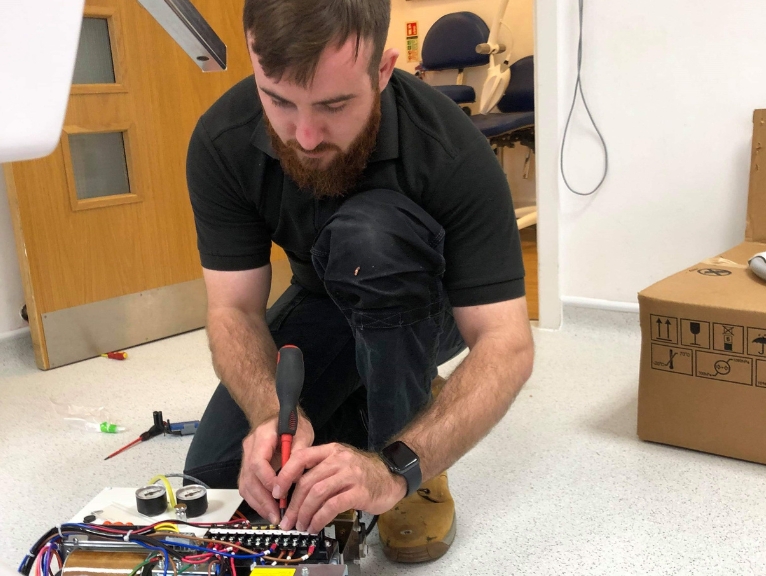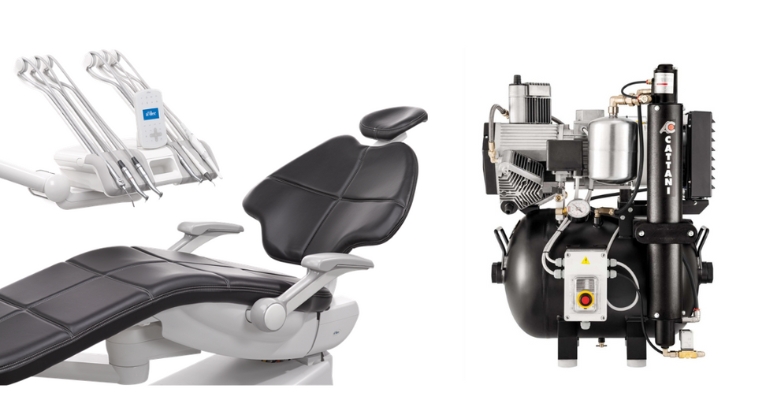
26th May 2023
When to Repair or Replace Your Dental Equipment
As a dental professional, you constantly rely on your equipment to provide the best possible care to your patients. Previously, we’ve looked into the advantages that planned maintenance packages can hold for your practice, but deciding when to opt for repairing your equipment instead of replacing it can be a difficult dilemma. Balancing decisions like cost, downtime, and warranties more often creates question marks over the right course of action.
In this article, we’ll try to shed some light on the situation and discuss the factors that can help you determine when it’s time to repair or replace your dental equipment and how often you should be doing so.

When Should You Replace Your Dental Equipment?
There are several signs that indicate when maintenance is no longer viable and that it’s, therefore, time to replace your dental equipment
Age and Wear
The lifespan of dental equipment varies depending on the type and usage. However, if your equipment is over ten years old, it might be time to consider a replacement. Older equipment is more prone to breakdowns which could result in longer long-term costs, and outdated equipment may not meet current industry standards.
Frequent Repairs
If you find yourself frequently repairing the same piece of equipment, it might be more cost-effective to replace it. While the one-time cost may seem like a big investment, it will likely save you money in the long run and provide a better experience for your patients.
Obsolete Technology
As technology advances, older equipment may become outdated and unable to perform certain procedures or meet new regulations. Replacing obsolete equipment with newer models will ensure that your practice remains competitive and compliant with industry standards. Further to this, newer equipment may be easier for your staff to use, meaning fewer mistakes and greater employee satisfaction.
Poor Performance
If your equipment is no longer performing at its optimal level, it’s time to consider a replacement. Poor performance can lead to longer treatment times, reduced patient satisfaction, and even compromised results. This issue can result from age or a change in requirements that cause the equipment to no longer be fit for purpose
Increased Energy Consumption
Older equipment tends to be less energy-efficient, leading to higher utility bills and running costs. Replacing old equipment with energy-efficient models can help reduce your practice’s operating costs.
Dental Equipment: Repair or Replace?
While the criteria above are a good starting point for seeing if it’s time to consider replacing your equipment, it’s important to weigh the pros and cons. Not only will this help you make the best decision for your business, but it will also support you in making the decision at the right time.
Cost
Compare the cost of repair against the cost of purchasing new equipment. If the repair cost is more than 50% of the replacement cost, it’s usually more economical to replace the equipment. This is because most new equipment benefits from a warranty which is rarely offered for repaired existing equipment.
Warranty
Check if your equipment is still under warranty. If so, it’s likely that certain repairs are covered, meaning that repairing the equipment might be affordable or even cost-free. This only usually applies to more recently purchased equipment, but it’s always worth checking.
Availability of parts
For older equipment, replacement parts may become increasingly difficult to find or expensive. In such cases, replacing the equipment might be more practical. However, as we mentioned above, older equipment is often less energy efficient and can result in unexpected costs through breakdown or becoming obsolete. So, in that sense, this investment may solve two problems at once.
Downtime
Consider the amount of downtime that will result from repairing or replacing equipment. If repairing the equipment will cause significant downtime and disrupt your practice, it might be more convenient to replace it. Signing up for a holistic maintenance package is often a good way to avoid maintenance downtime, as regular checks from experienced engineers can sometimes resolve a problem before it’s arisen.
How Often Should You Replace Your Dental Equipment?
The frequency at which you should replace your dental equipment depends on several factors, including the type of equipment, usage, and maintenance. For example, a handpiece, being one of the most frequently used pieces of equipment, should be replaced every 3-5 years, while larger items like a dental chair or x-ray unit may have a lifespan of 10+ years.
However, each of these lifespans is entirely dependent on the model, usage and maintenance of the individual piece of equipment. To fully understand the maintenance or replacement needs of your equipment, we’d recommend contacting the manufacturer or maintenance professional, as well as acquainting yourself with the CQC dental maintenance guidelines.

Repair or Replace Your Equipment with Curran Dental
Throughout our two decades of experience in the dental sector, we’ve built a trusted reputation as a provider of high-quality dental equipment. From the treatment centre that forms the cornerstone of your surgery to the equally crucial digital imaging, decontamination equipment and much more, our wide range of products has a great selection.
We also offer comprehensive maintenance solutions that offer ongoing support for every dental surgery. It’s our passionate belief that, even when a project is finished, you’re still entitled to advice and maintenance.
If you want to find out more about what we can offer your dental practice, feel free to contact us for a more detailed conversation.

Further Reading:
- Best Design Ideas for Your Dental Practice
- How Planned Maintenance Packages Can Benefit Your Dental Practice
- How Dental Showrooms Can Make All the Difference to Your Practice









